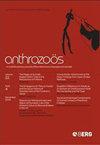Motivational Aspects of Desert Tortoise Caretaking
IF 2.3
2区 农林科学
Q2 SOCIOLOGY
引用次数: 9
Abstract
ABSTRACTThis study (n=490) investigates the motives of humans who maintain desert tortoises in a captive setting. Using data from previously published surveys, a species-appropriate instrument, the Tortoise Caretaking Questionnaire (TCQ), utilizing 20 Likert-type questions was developed to examine ten motives for caretaking. The TCQ also contained a brief demographic section. Each motive was analyzed with respect to strength, age, gender and tortoise rank (compared with other household pets). Two thousand three hundred and seventy-eight questionnaires were distributed and 496 were returned (20.8%); of these, 490 were deemed usable. All motives were shown to be significant and with one exception, females expressed stronger levels of each than did males. Younger respondents tended to rank tortoises higher than other pets whereas older respondents ranked them lower. Future research should investigate longitudinal and other aspects of tortoise caretaking.照顾沙漠龟的动机方面
摘要本研究(n=490)调查了人类在圈养环境中饲养沙漠象龟的动机。利用以前发表的调查数据,开发了一种适合物种的工具,即乌龟照顾问卷(TCQ),使用20个likert型问题来检查照顾的10种动机。TCQ还包含一个简短的人口统计部分。每个动机都被分析了关于力量、年龄、性别和乌龟等级(与其他家庭宠物相比)。共发放问卷2378份,回收问卷496份,回收率为20.8%;其中490个被认为是可用的。所有的动机都被证明是重要的,除了一个例外,女性表达的每一种动机都比男性强。年轻的受访者倾向于把乌龟排在其他宠物的前面,而年长的受访者则把乌龟排在后面。未来的研究应从纵向和其他方面对乌龟的照顾进行调查。
本文章由计算机程序翻译,如有差异,请以英文原文为准。
求助全文
约1分钟内获得全文
求助全文
来源期刊

Anthrozoos
农林科学-兽医学
CiteScore
3.40
自引率
18.80%
发文量
43
审稿时长
>36 weeks
期刊介绍:
A vital forum for academic dialogue on human-animal relations, Anthrozoös is a quarterly, peer-reviewed journal that has enjoyed a distinguished history as a pioneer in the field since its launch in 1987. The key premise of Anthrozoös is to address the characteristics and consequences of interactions and relationships between people and non-human animals across areas as varied as anthropology, ethology, medicine, psychology, veterinary medicine and zoology. Articles therefore cover the full range of human–animal relations, from their treatment in the arts and humanities, through to behavioral, biological, social and health sciences.
 求助内容:
求助内容: 应助结果提醒方式:
应助结果提醒方式:


